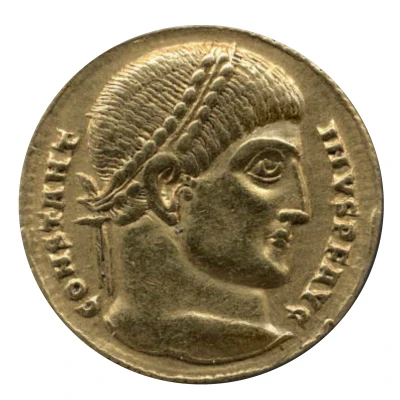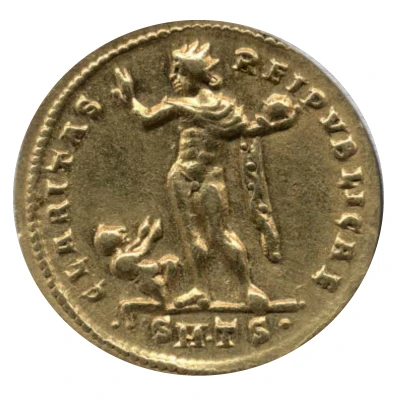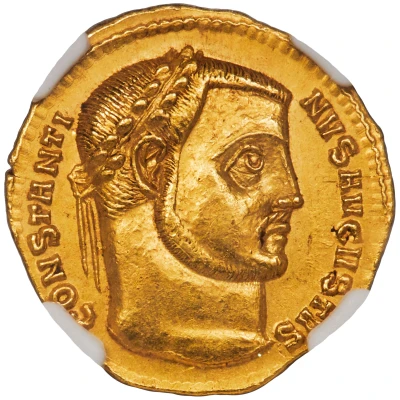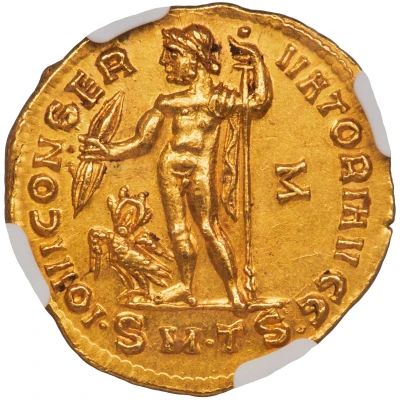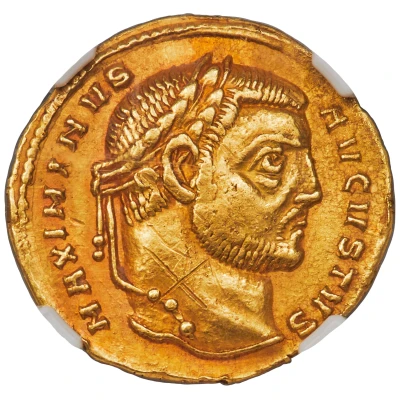
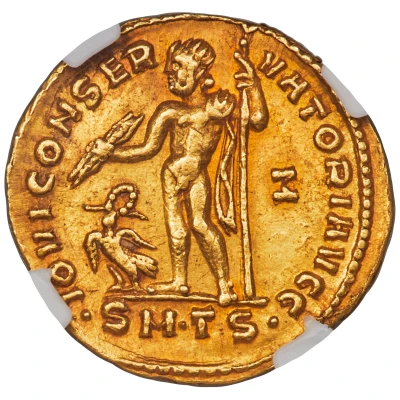

© Heritage Auctions
Aureus - Maximinus II IOVI CONSERVATORI AVGG; Thessalonica
| Gold | 5.01 g | 20 mm |
| Issuer | Rome › Roman Empire (27 BC - 395 AD) |
|---|---|
| Emperor | Licinius I (308-324) |
| Type | Standard circulation coin |
| Years | 311-313 |
| Value | 1 Aureus = 25 Denarii |
| Currency | Solidus, Reform of Constantine (AD 310/324 – 395) |
| Composition | Gold |
| Weight | 5.01 g |
| Diameter | 20 mm |
| Shape | Round (irregular) |
| Technique | Hammered |
| Orientation | Variable alignment ↺ |
| Demonetized | Yes |
| Updated | 2024-10-04 |
| Numista | N#380073 |
|---|---|
| Rarity index | 100% |
Reverse
Jupiter, chlamys draped over left shoulder, standing left, holding thunderbolt in right hand and leaning on scepter with left hand; at feet to left, eagle holding wreath in beak; Σ (retrograde, mark of value) in right field, mintmark in exergue.
Scripts: Greek, Latin
Lettering:
IOVI CONSER-VATORI AVGG
Σ
•SM•TS•
Unabridged legend: Iovi Conservatori Augustorum
Translation: Jupiter Preserver of the Augusts
Comment
Maximinus II Daza ("The Dacian"), nephew of Galerius, was serving in the imperial bodyguard in AD 305, when his uncle plucked him from obscurity and elevated him to the rank of Caesar, establishing the Second Tetrarchy. Once established in power in his territories of Egypt and Syria, Daza seems not to have impressed his uncle greatly, for he was passed over for promotion twice in the chaotic years of AD 306-309. In AD 310, he took matters into his own hands by having his troops proclaim him Augustus, setting him against four other Augusti (Galerius, Licinius I, Constantine I, and the rebel Maxentius) and making a shambles of Diocletian's carefully constructed tetrarchic system. After Galerius' death in AD 311, Daza cast himself in his uncle's mold as the defender of paganism and a persecutor of Christianity, placing him in opposition to Constantine and Licinius, who favored religious toleration. After Constantine crushed Maxentius in AD 312, Daza attempted to do the same to Licinius, invading Thrace the following year with a sizeable force of 70,000. But his long forced marches exhausted his troops and the outnumbered army of Licinius won a resounding victory at the Battle of Tzirallum, in AD 313. Daza fled the field dressed as a slave, but soon died either of disease or by his own hand. His rule had been harsh and his subjects welcomed Licinius as a liberator. Christians in particular reviled Daza as the last great Roman persecutor.Interesting fact
One interesting fact about the Aureus - Maximinus II (IOVI CONSERVATORI AVGG; Thessalonica) coin is that it features the image of the Roman god Jupiter on one side, and the emperor Maximinus II on the other. This coin was minted during a time of great turmoil in the Roman Empire, and the image of Jupiter was likely included to symbolize the power and protection of the gods during this period. Additionally, the coin's gold content and intricate design make it a valuable and highly sought-after collector's item among numismatists today.
